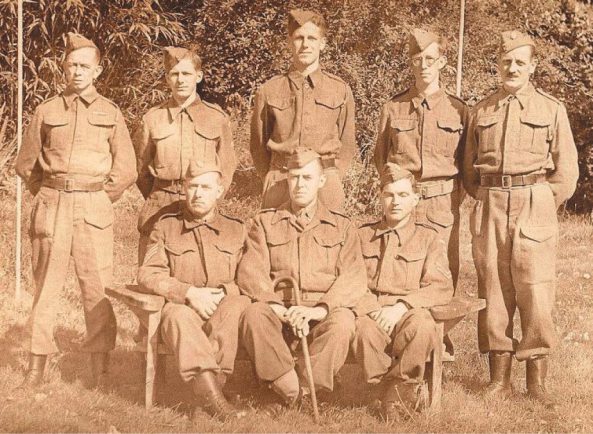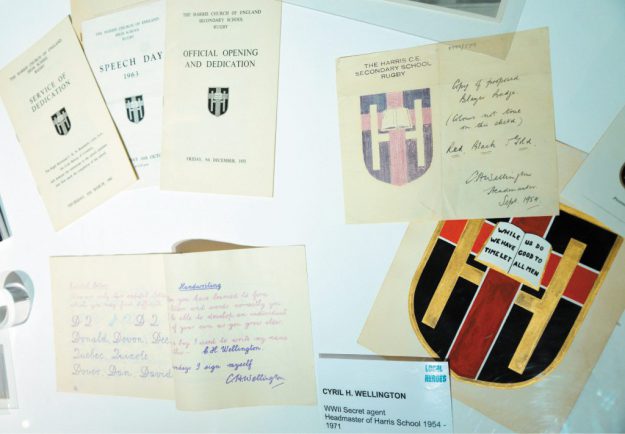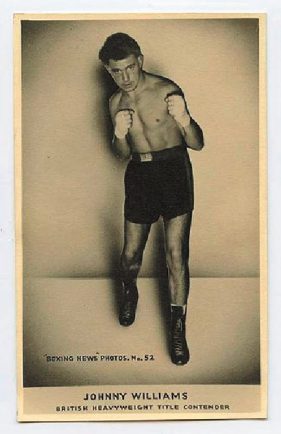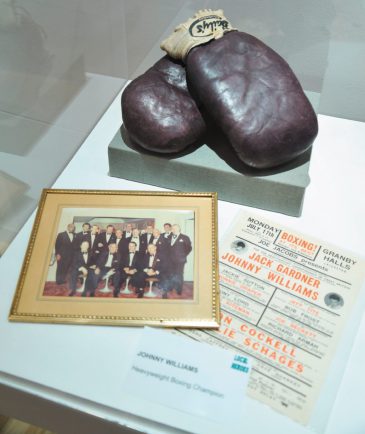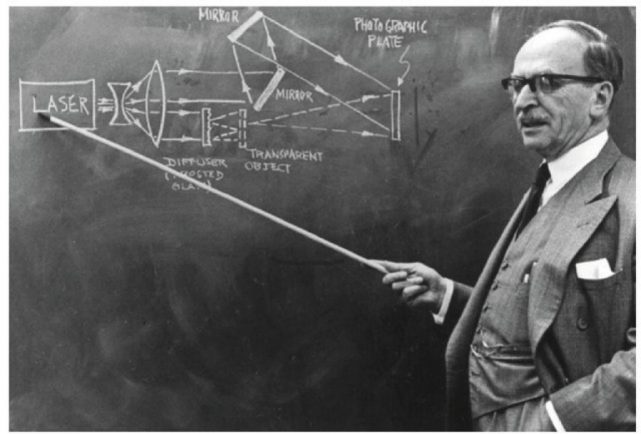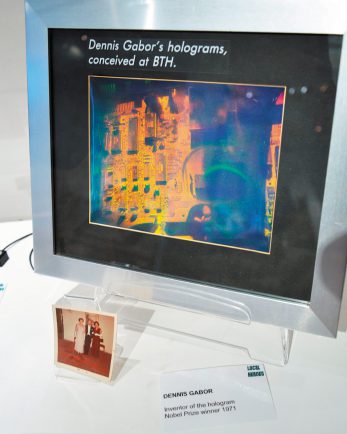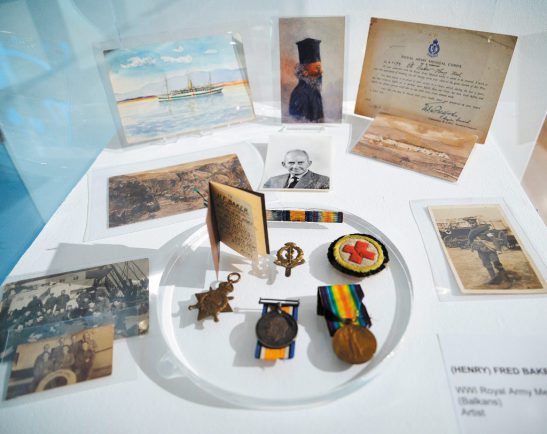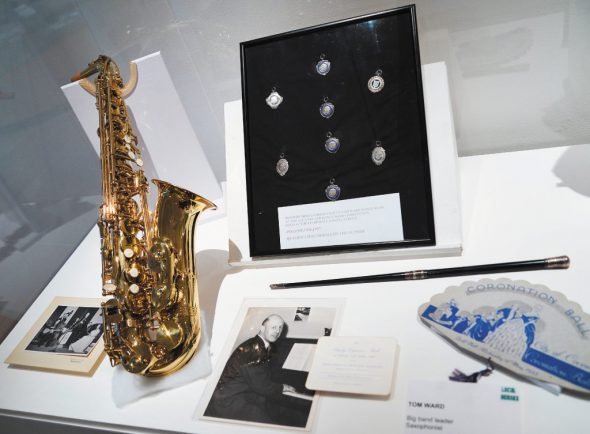RUGBY’S finest are being celebrated at the town’s art gallery and museum this month.
Rugby Art Gallery and Museum’s Local Heroes exhibition runs until Saturday October 29, showcasing some of the town’s most influential and inspiring residents – some of whom remain relatively unsung and may surprise Rugby residents.
Artifacts, mementos and items belonging to the heroes themselves are being displayed at the exhibit along with brief looks into each figure’s life work.
When asked what makes a hero, a museum spokesperson said: “Heroes come from all walks of life. Some are just ordinary people leading ordinary lives who suddenly find themselves in situations in which they have had to act heroically; in other cases they are just normal people doing small deeds which have had a larger impact on others.”
Heroes featured in the exhibition include:
- First World War stretcher-bearers Henry Fred Baker, who painted small scenes from his service with a paint brush he kept in a matchbox, and William Manning who wrote his own diary, providing detailed accounts from the front-line
- World-famous wartime poet Rupert Brooke
- Emma Underwood, awarded for exceptional service as an army nurse
- Cyril Wellington, the first headmaster of Harris School who was also a secret agent
- Frank Whittle, mastermind behind the turbojet engine
- Dennis Gabor, the Nobel Prize-winning physicist who invented holography
- William Gilbert, maker of the first balls supplied to Rugby School which became the global Gilbert brand
- World champion boxer Johnny Williams
- Tom Ward, big band conductor and saxophonist
- Mrs James Haddock (Countess Julia I Wratislaw) who established the cabman’s shelter which was in Market Place
- James W Kenning, printer and founder member of the Co-operative Society in Rugby who became the first librarian for the town
- Matthew H Bloxam, renowned antiquarian and collector.
For more information, visit www.ragm.co.uk or call 01788 533201.
__

Cyril Henry Wellington (front, centre) as part of his Home Guard unit. (s)Cyril Henry Wellington as part of his Home Guard unit. (s)
CYRIL HENRY WELLINGTON – Born in 1907 and a keen rugby player in his early life when he lived near Plymouth, Cyril and his brother Herbert were selected for special confidential work for the War Office during the Second World War.
Remaining on British soil under the guise of a Home Guard captain, he created a secret operational base, always on alert for the threat of German invasion. Had the enemy invaded, trained agents like Cyril were trained to destroy railway lines and bridges to curb their advance.
After the war he returned to his main profession, teaching, and was given his first headship in Warwickshire before becoming headmaster at the brand new Harris Church of England School in 1954. He designed the school badge and came up with the school’s motto.
Cyril was headmaster until his retirement in 1971 and died the day after his golden wedding anniversary to his wife, Doris, in 1986.
His two daughters Ann and Margaret had no idea of his involvement with this elite secret agent work until they found his diaries after his death.
__

World champion boxer Johnny Williams lived in Rugby throughout his sporting career. (s)World champion boxer Johnny Williams lived in Rugby throughout his sporting career. (s)
JOHNNY WILLIAMS – Living in Rugby throughout his prestigious boxing career, Johnny went on to become both British and Empire heavyweight boxing champion.
He turned professional in 1946 and became known for his unique ‘scientific’ style. He turned boxing into a ‘noble art’ rather than a showcase of brute strength favoured by his opponents in the 1940s and 1950s.
Boxing at middleweight, light-heavyweight and heavyweight, he finished his career in 1960 with a record of 60 wins – 38 by knockout – and 11 losses.
Many say Johnny never received the recognition he deserved due to his cautious approach to the sport when fans preferred big punchers and colourful personalities.
Johnny spent many years working as a farmer at Newton Manor near Rugby after his retirement. He is survived by his wife Jocey and their daughter.
__

Nobel Prize winner Dennis Gabor worked in Rugby while he made his scientific breakthroughs. (s)Nobel Prize winner Dennis Gabor worked in Rugby while he made his scientific breakthroughs. (s)
DENNIS GABOR – An ‘unsung hero of science’ who made his breakthrough while working in Rugby. Dennis was a Hungarian-British electrical engineer and physicist, most notable for inventing holography, for which he later received the 1971 Nobel Prize in Physics.
Holography, the science and practice of making holograms, is now widely used in bio-medical sciences, construction, military technology and security and was mastered by Dennis during his time in the town.
Dennis was offered a research position at the British Thomson-Houston Rugby during the Nazi occupation of Europe and although holography as a field of study would hit technological barriers, its impact on modern society is huge.
High-street shop scanners, modern CD players, advanced medical equipment and manufacturing technology have all benefitted from holography.
He achieved worldwide success and attention during his lifetime and received numerous awards for his work.

